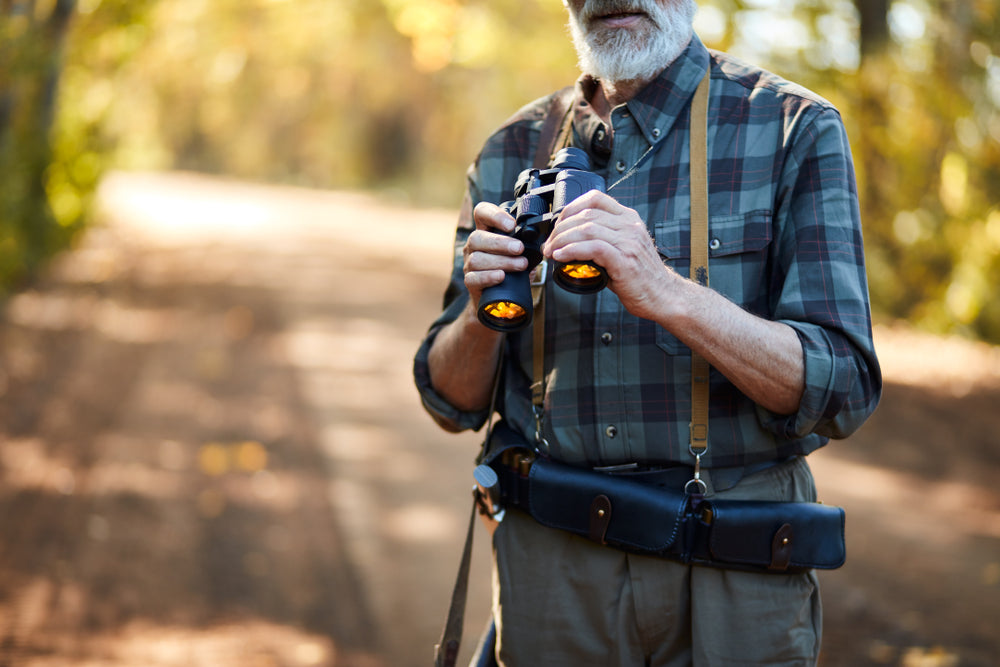Tagging a big buck with minimal effort is what every hunter dreams of, but that’s only possible if you’ve done your homework.
The best hunters recognize just how important scouting is to a successful hunt. In case you’re new to hunting and are unaware, scouting is “the art of planning your hunt, becoming familiar with terrain, and learning the behavior patterns of your prey”.
Sound simple? While you certainly shouldn't overcomplicate things for yourself, treating scouting lightly or being glib about its importance is the wrong approach to take. There’s a lot that goes into scouting for deer if you’re doing it right. And when you do it right, the results speak for themselves.
Here are six tips that will get you off on the right foot. We’ll cover everything from how to e-scout for whitetail deer to entry & exit best practices to the possibly uncommon but still effective tactic of bribing locals for intel with a six-pack (or maybe even bartering by providing your own hunting intel).
1. Scout Like You Hunt
Don Donarski’s “Deer Scouting 101” is well worth a read if you’re new to hunting and scouting for whitetail. Among its many insights is the following tidbit:
“As a retired Army infantry officer one mantra sticks in my mind, and should in yours: Train (scout) as you will fight (hunt). In other words, if you are not going to do it during the season, don't do it now. If you will do it during the hunt be darn sure you are doing it now...Most people scout by simply going for a walk in the woods. This is certainly not the way you hunt, so why do it now?”
Donarski mentions that many hunters — new and experienced alike — scout more or less by walking around the woods. But this is a mistake.
He cautions hunters to take scouting more seriously by being intentional and careful. In other words, walk and stalk a bit, Stop. Wait. Listen. Observe. Move carefully and take in your surroundings intently.
2. Use Trail Cameras & Tech to Your Advantage
Some hunters are dead-set against the latest technologies, swearing by tried-and-true methods. And, while we’re not here to tell anyone to change an approach that works, there are clear benefits to using modern technology to your advantage.
Even if you don’t implement cutting-edge technology in the woods, learning how to e-scout for deer before you hit the trails can be advantageous.
Here are several technologies we recommend using next time you’re scouting:
- Trail cameras & drone deer scouting
- Scouting binoculars
- GPS & mapping apps
- Rangefinders
3. Talk to The Locals
When considering how to scout for deer on public land, chewing the proverbial cud probably isn’t high on your list of winning strategies. But according to OutdoorLife’s Travis Falkner, maybe it should be.
Is this technique old school? Sure. Is it effective? You bet!
Local hunters (who are willing to be coerced into giving up their secrets) are just one source of information. You can also talk to delivery drivers and postal workers who visit the same areas time and time again and are likely aware of local deer behavior.
4. Tread Carefully
How you enter and exit the woods when scouting for deer is just as important as your technique while on trails. As Falkner suggests in the above-referenced blog,
“Choosing your setups is just half the battle, because how you reach and exit these areas can make or break your hunt,” says Gray. “When scouting, I try to map out safe entry and exit points that allow me to reach, hunt, and exit my setups without bumping deer. Playing the wind is also a factor in what routes I’ll use on any given hunt. It’s important to remember that sometimes the easiest and quickest route to or from your treestand is not always the best option.”
5. Time it Right
Scout just after the season’s close, recommends Jeff Johnston. Here are his three reasons why:
- Deer are still in their winter patterns, which will reveal the food sources and cover they’ll use next hunting season.
- The bare winter woods are easier to see through and read. If snow’s on the ground, tracks clearly reveal where deer travel to and from daily.
- Spooking a big buck doesn’t matter.”
6. Utilize Feeders
Johnston also emphasizes that using feeders can be beneficial, and placing them during scouting time (just after the season) is ideal:
“If you intend to install food plots or feeders, now’s the time to locate those spots. Keep in mind, the more secluded they are, the more likely bucks will come to those spots in the daytime. But also the more difficult they’ll be to plant and to access during the season...you must make any food plots or bait locations easy for him to access and safe feeling for him.”
Attract Deer Easily With the Tectonic Timed Feeder
Looking for more ways to increase your odds when hunting whitetail? Attract deer to you and train them to feed during the day with the Tectonic Deadfall Deer Feeder.

